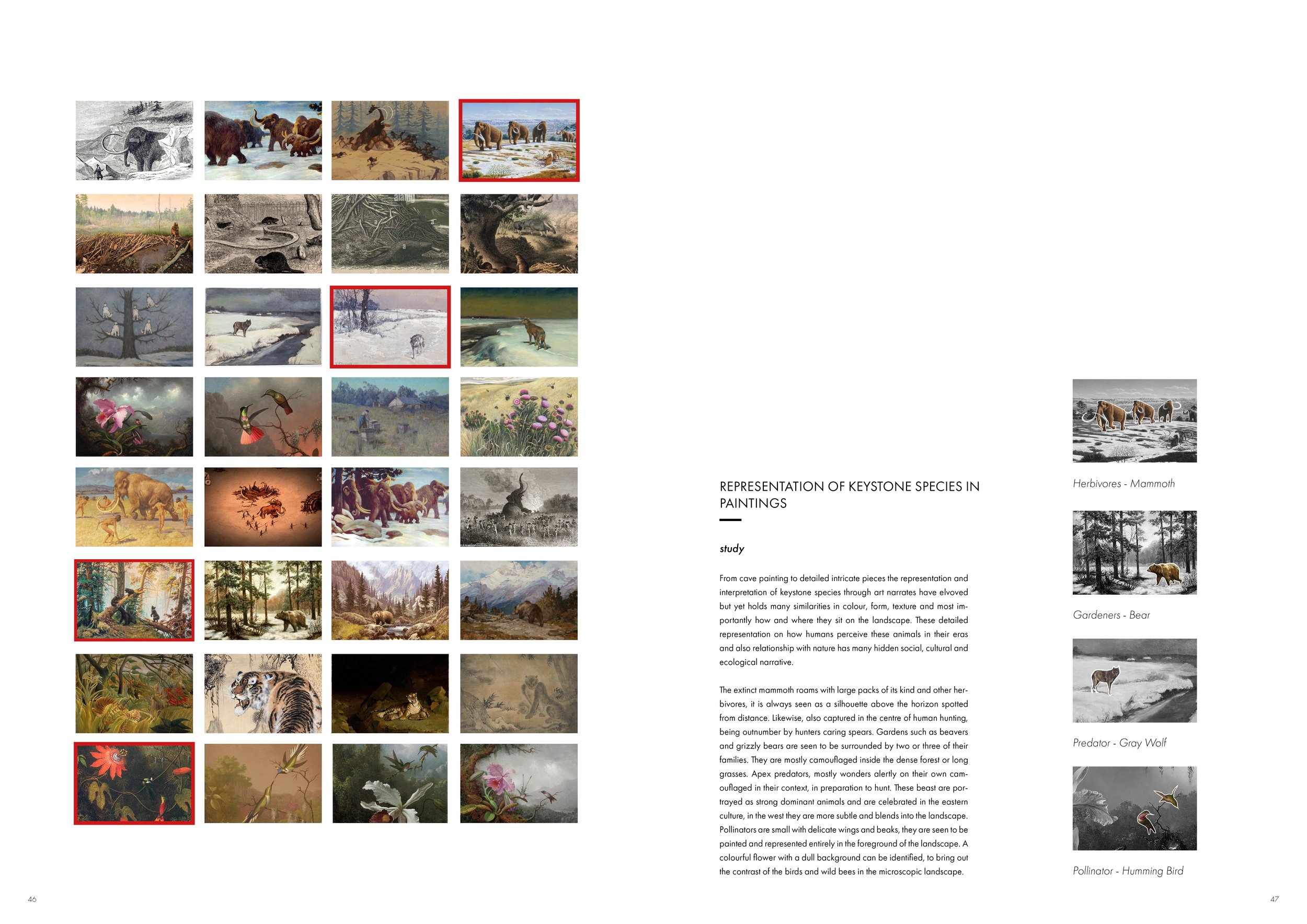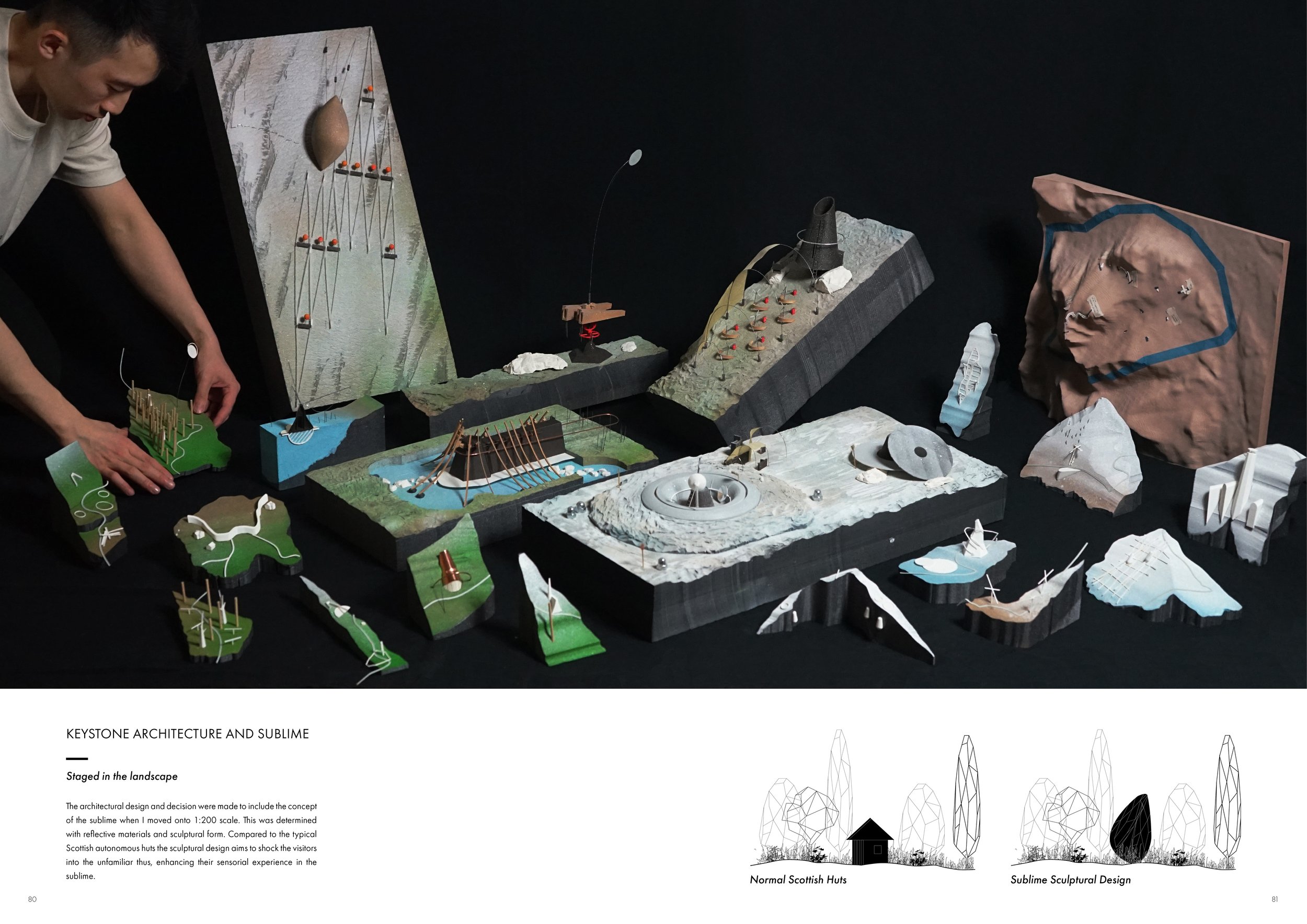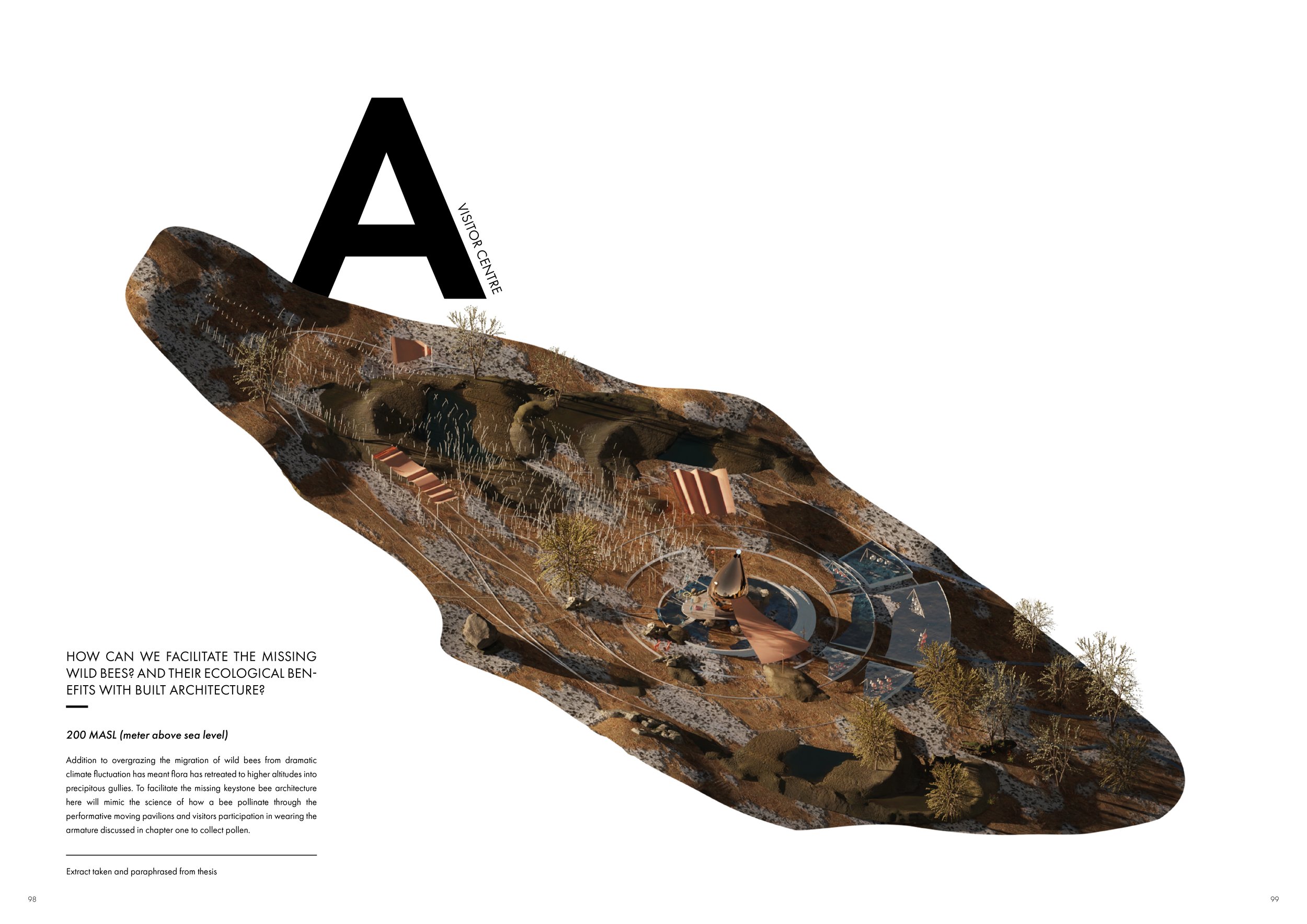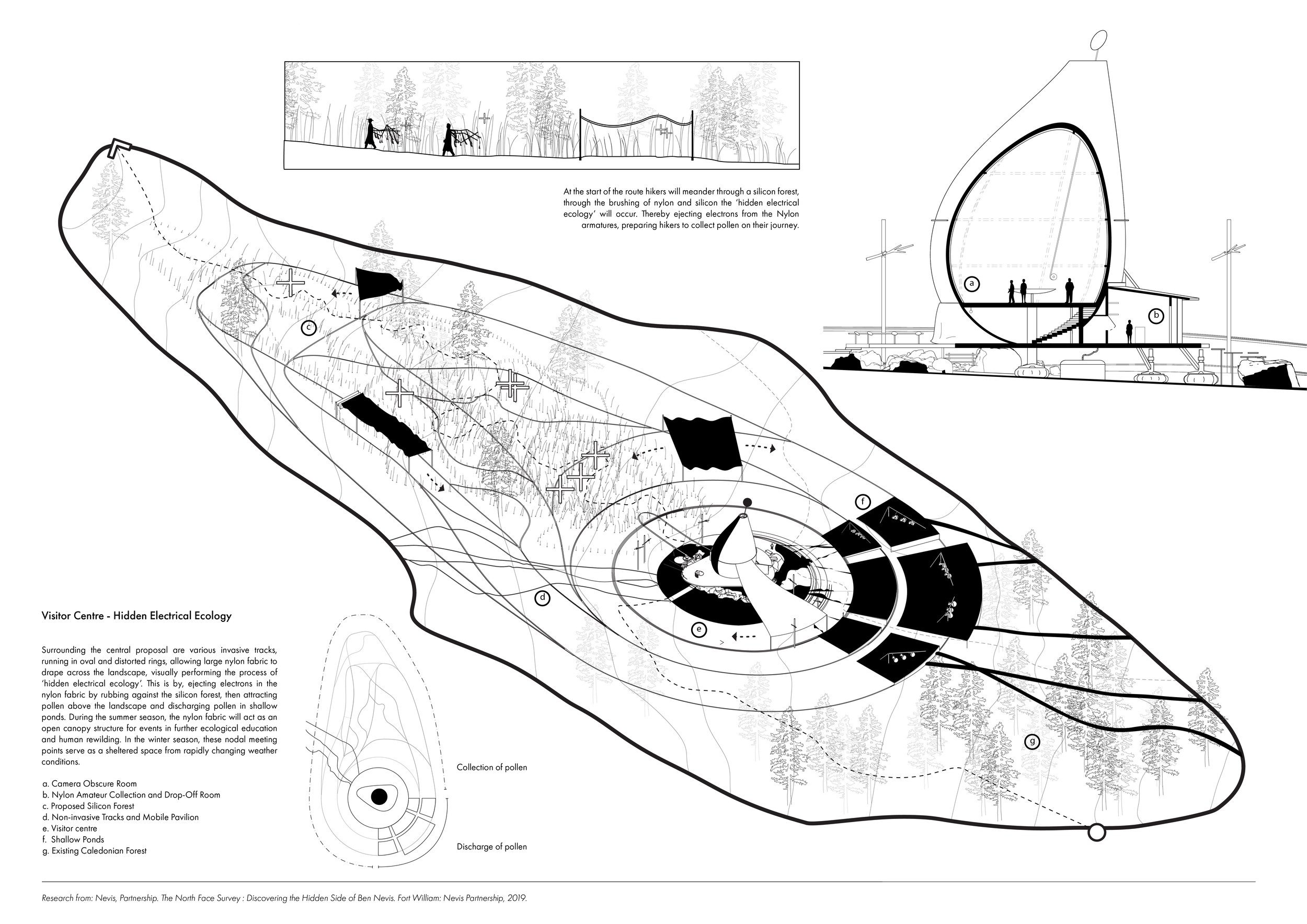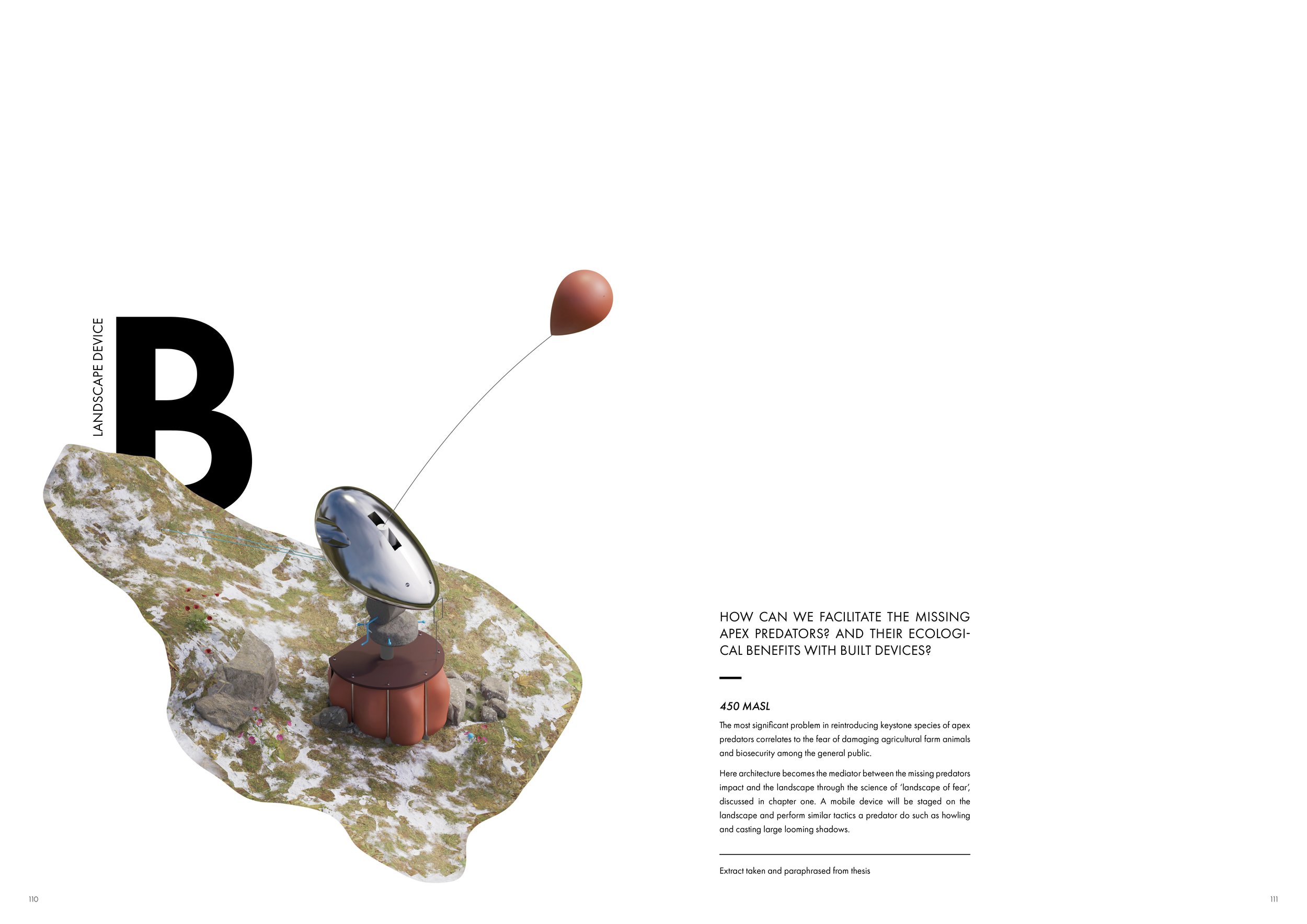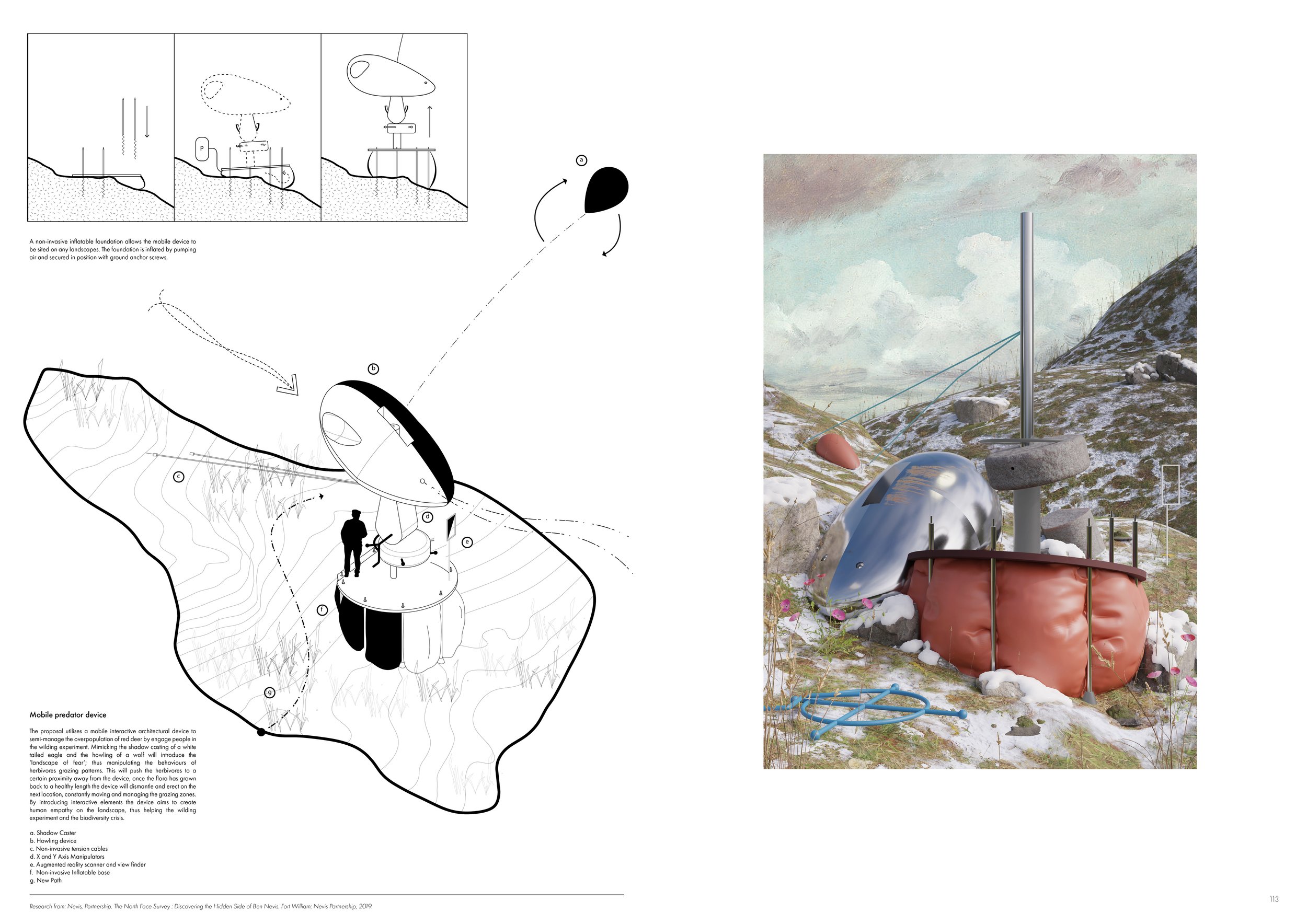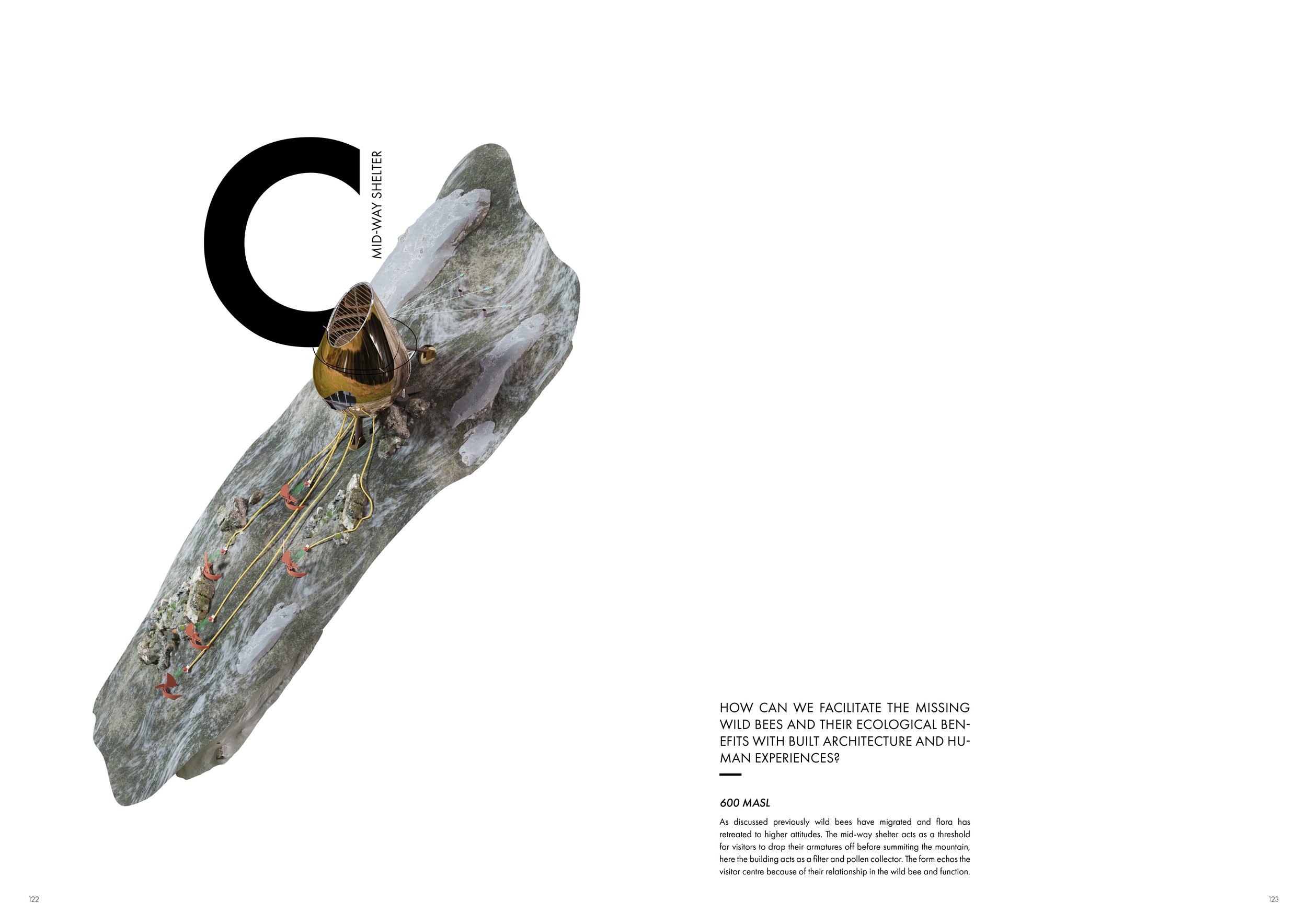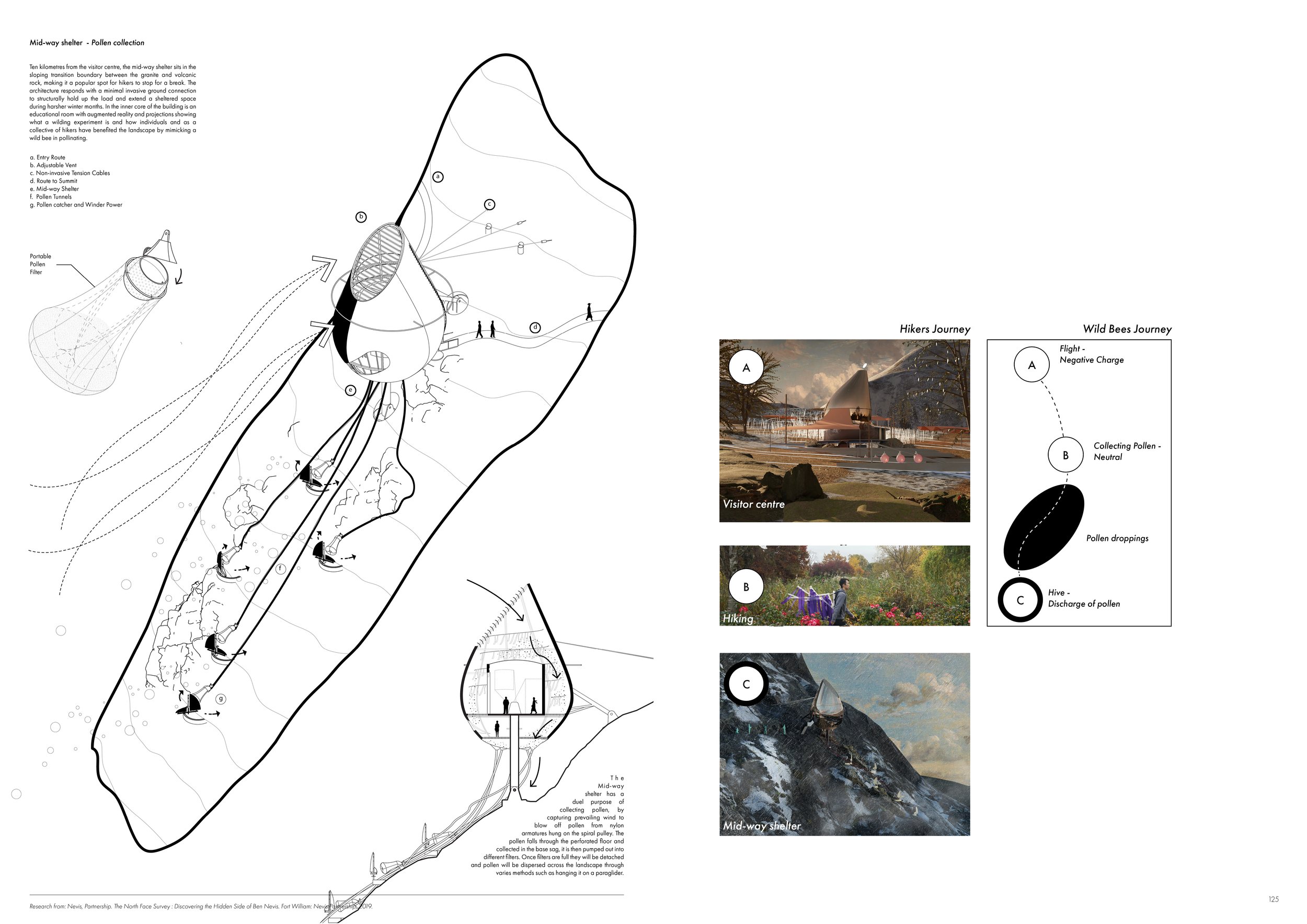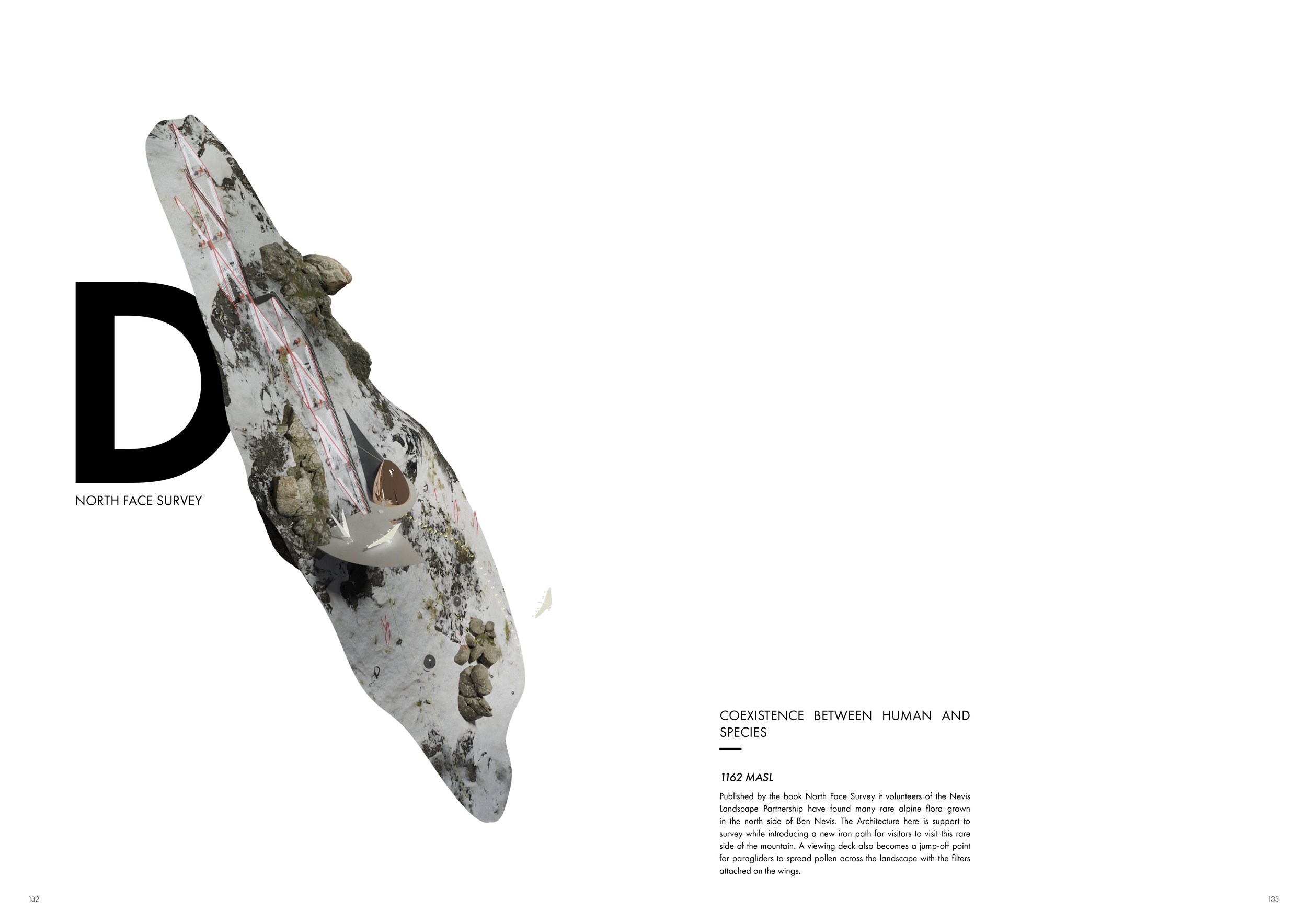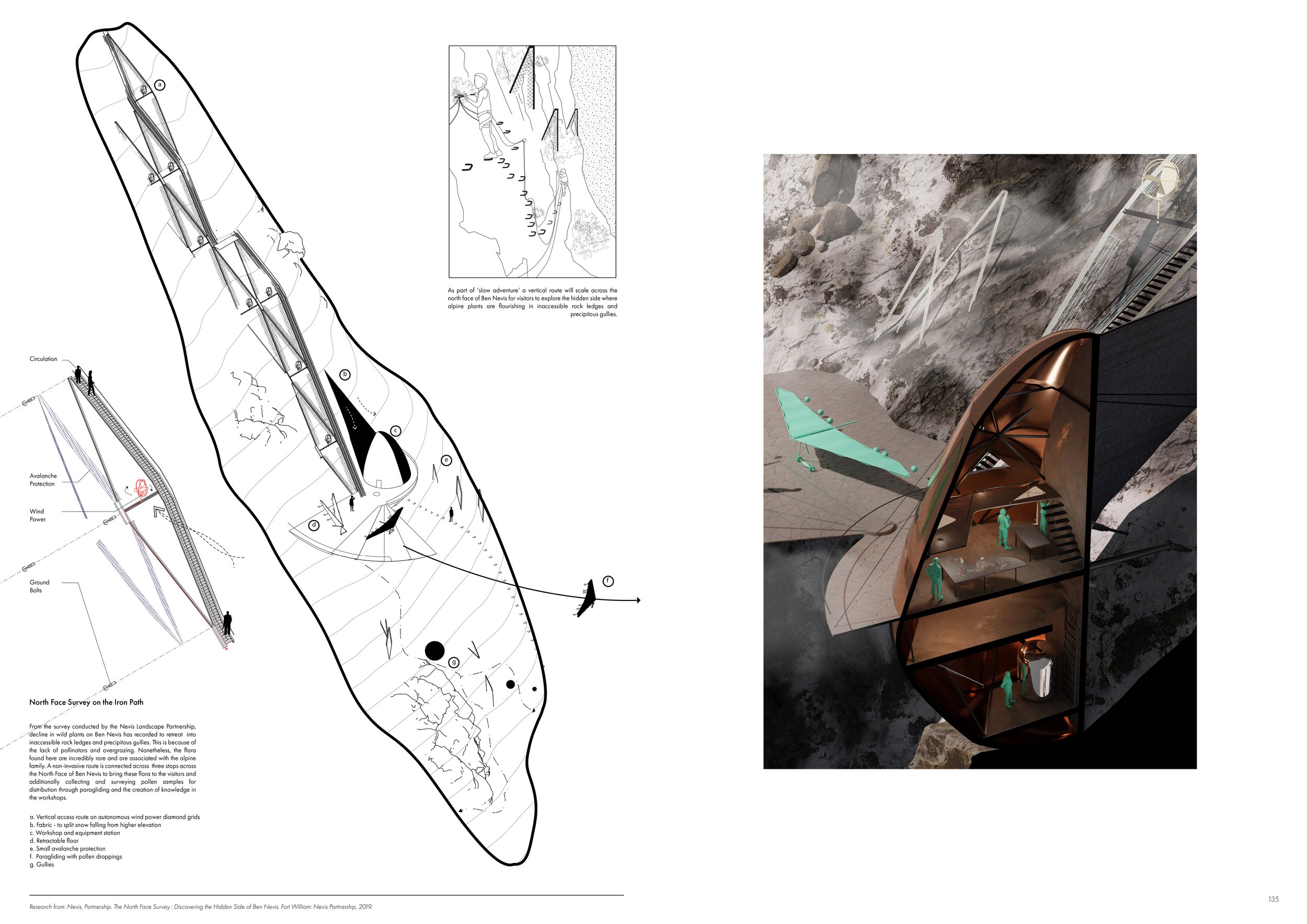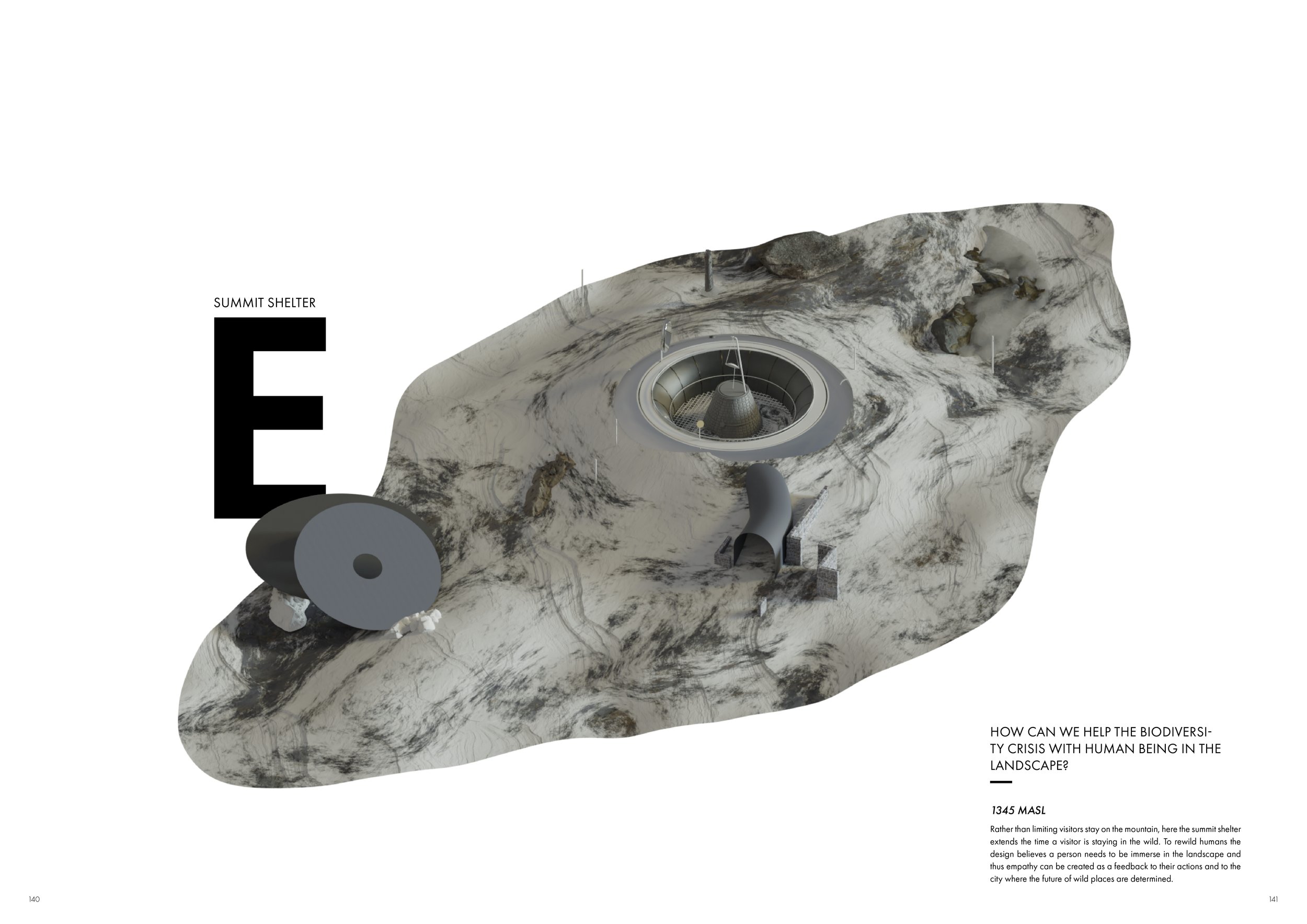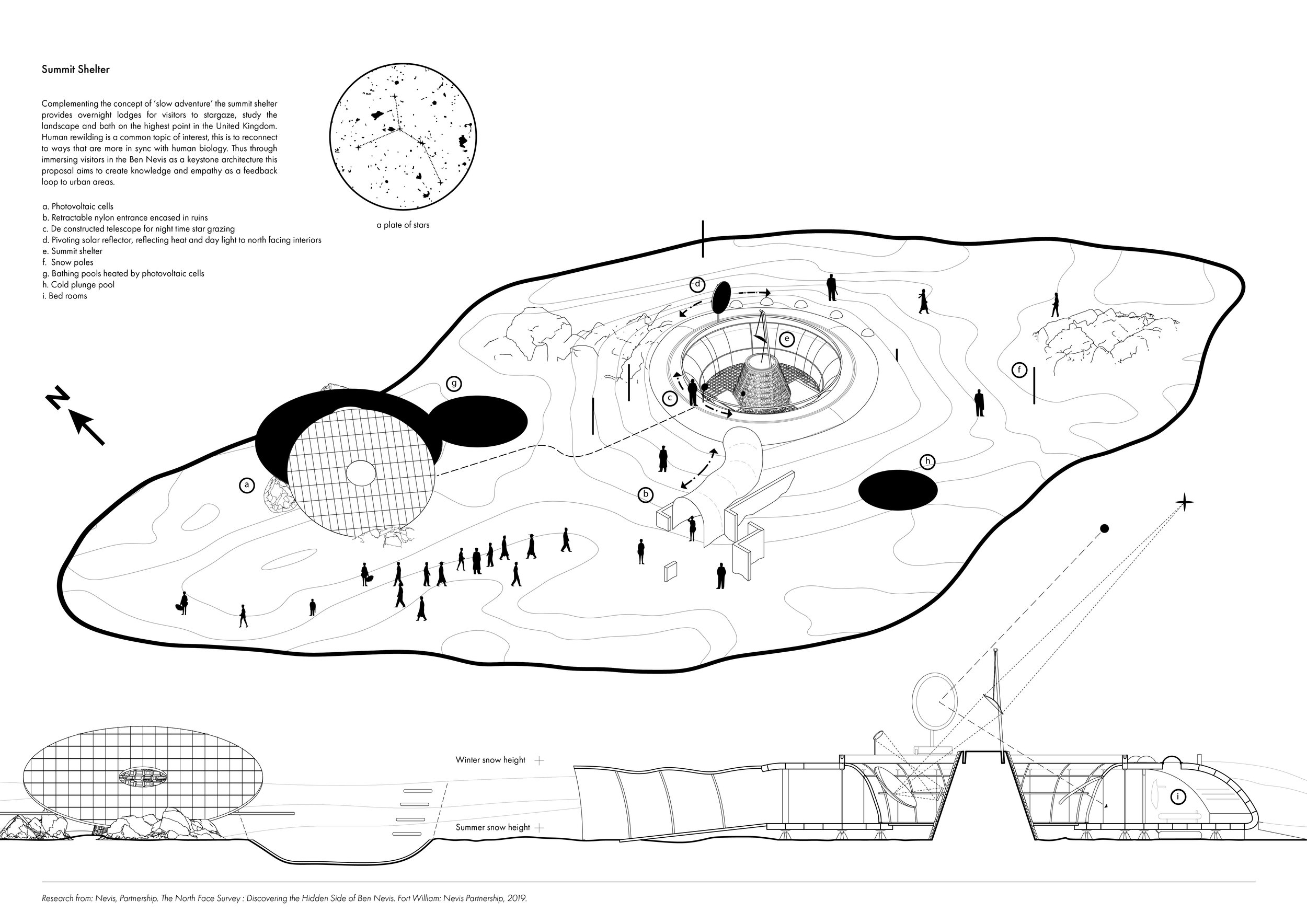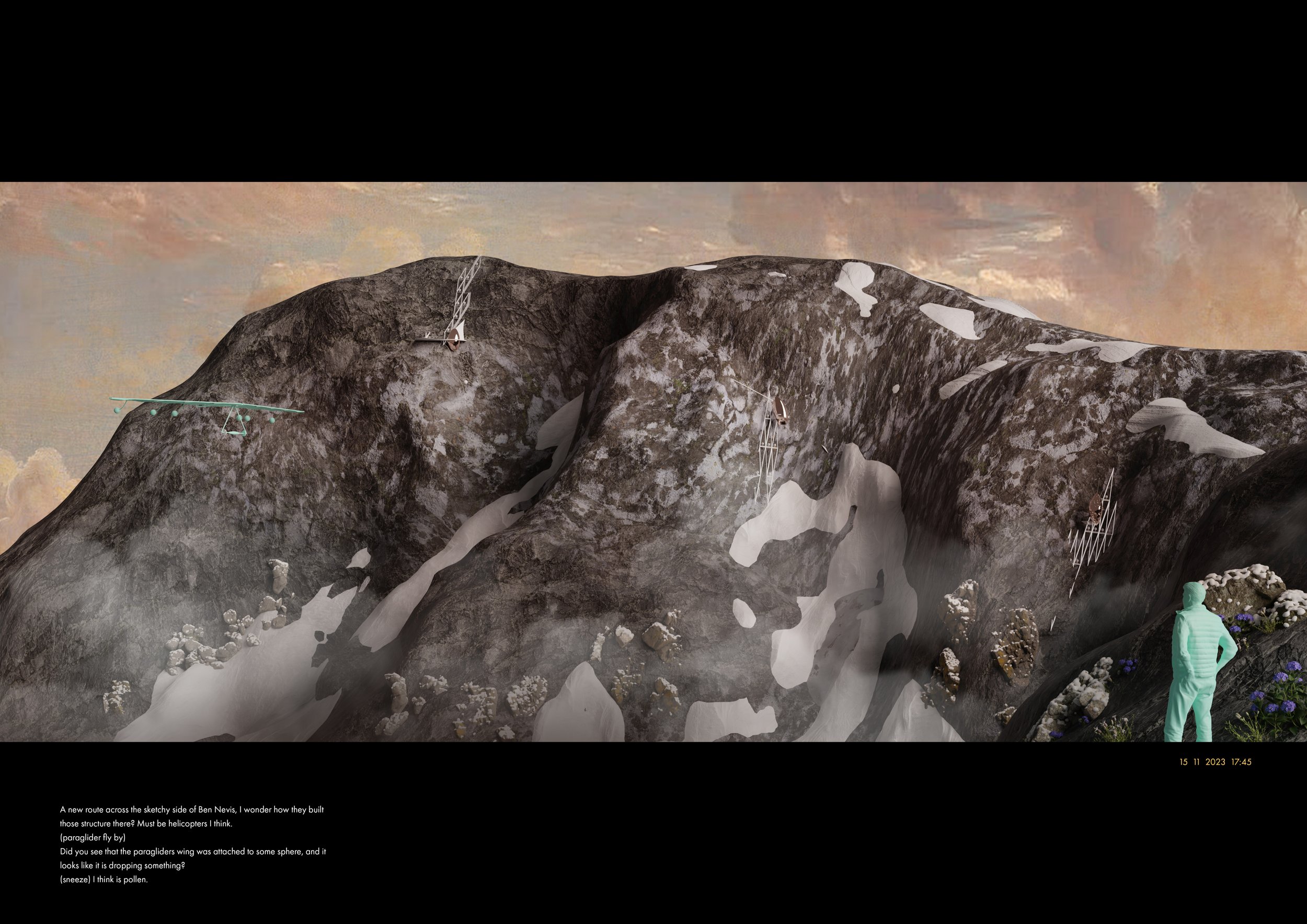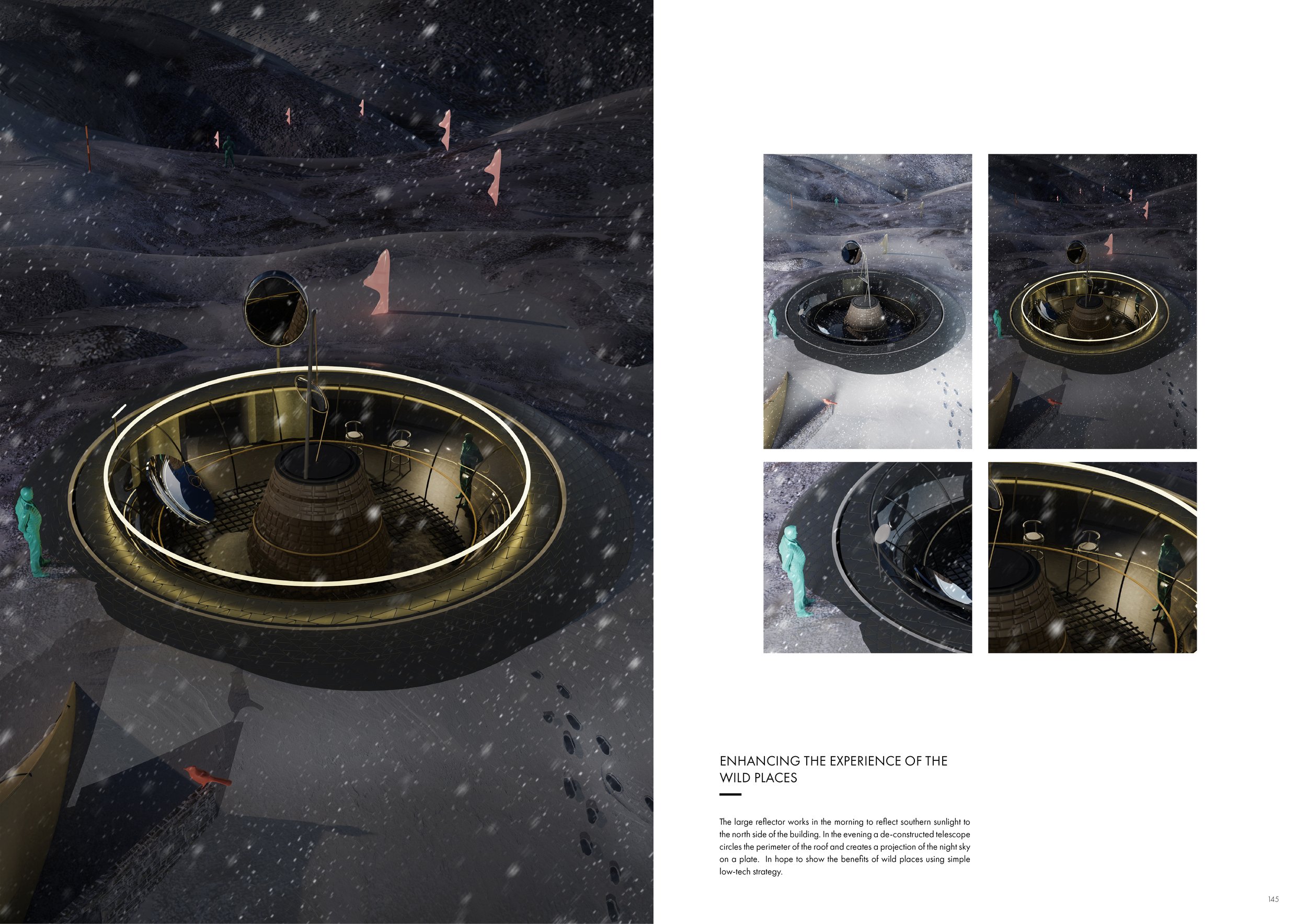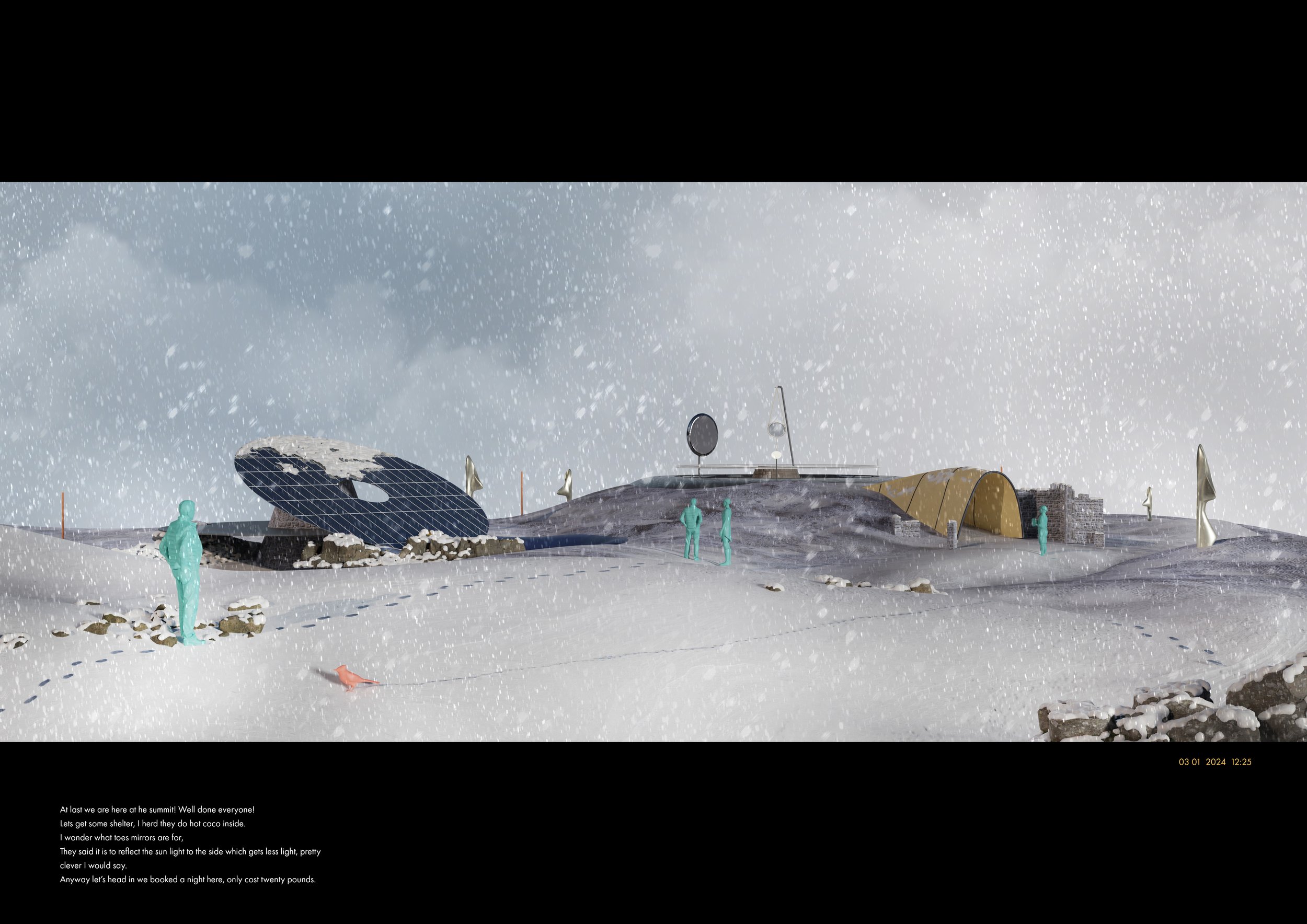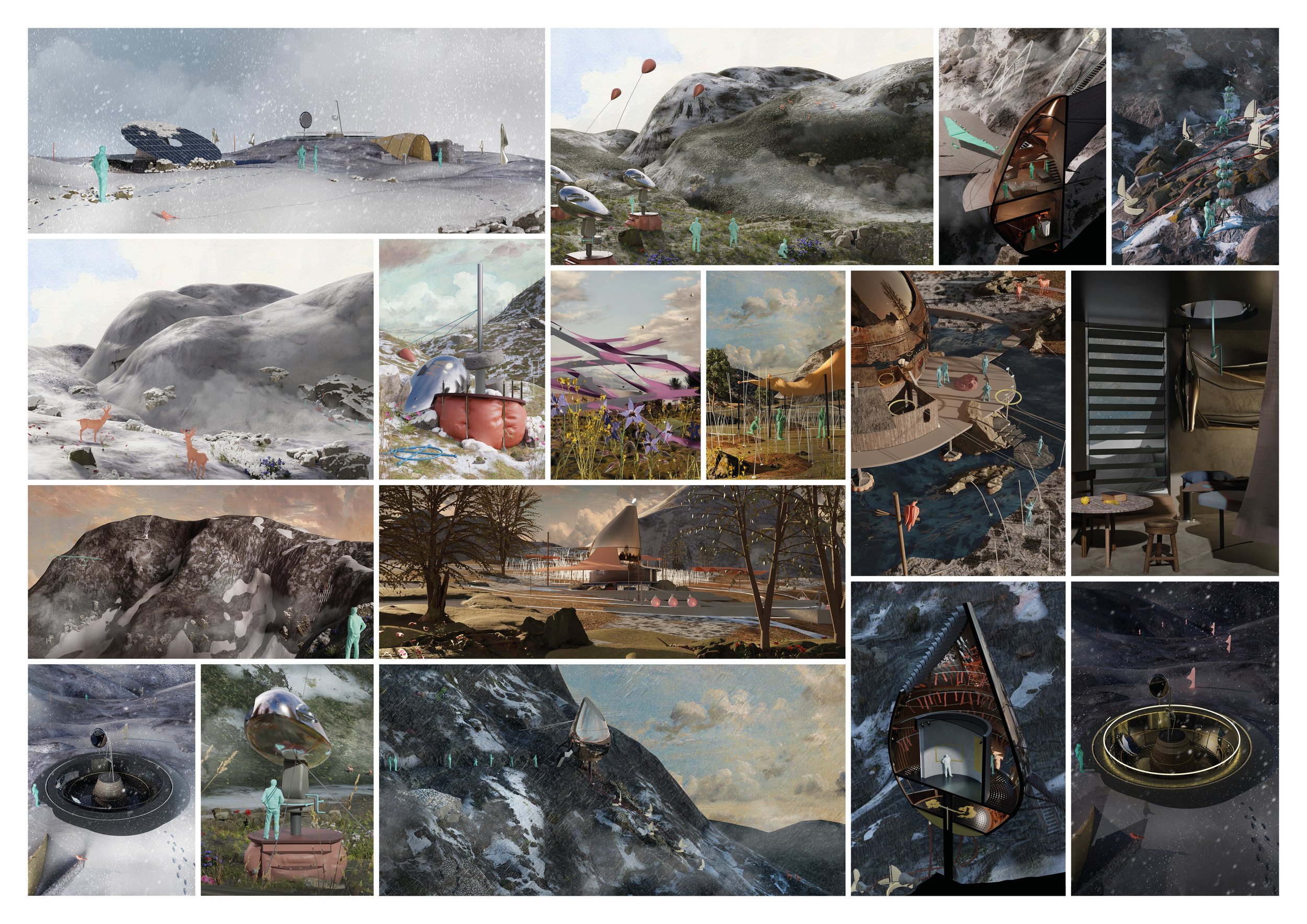Kenny Tam Y5
Keystone Architecture In the last century, the escalated effects of humanity on the planet in manipulating wild areas have dubbed the present epoch the Anthropocene, indicating that modern humans have since become the most dominant species in shaping the planet’s future. The exploitation of wild spaces has since incited a biodiversity crisis. Species now face extinction and mass migration due to the breaking of the ecosystem, these are also known as ecological tipping points. Since the crisis, scientists and ecologists have revived the concept of using 'keystone species' to manage other wildlife and ecosystems at large. Rewilding is the efforts of using keystone species as a conversational method; while a new term 'wilding experiment', first appeared in Jamie Loirmers book Probiotic Planet, conveys the progressive idea of hacking ecological systems using or in reference to keystone species. The project challenges the role of architecture in the wild to mimic keystone species that are missing in Ben Nevis, patching the ecological gaps and progressing from the old wild to the new. The architecture will facilitate the missing ecological interactions and provide a threshold for people to mediate across wild places. The aim of the project does not merely echoes what a keystone species do but also an opportunity to connect anthropocentric humans back to wild places through participation of 'wilding experiments' and in hope to create empathy for the fragile ecosystem.


